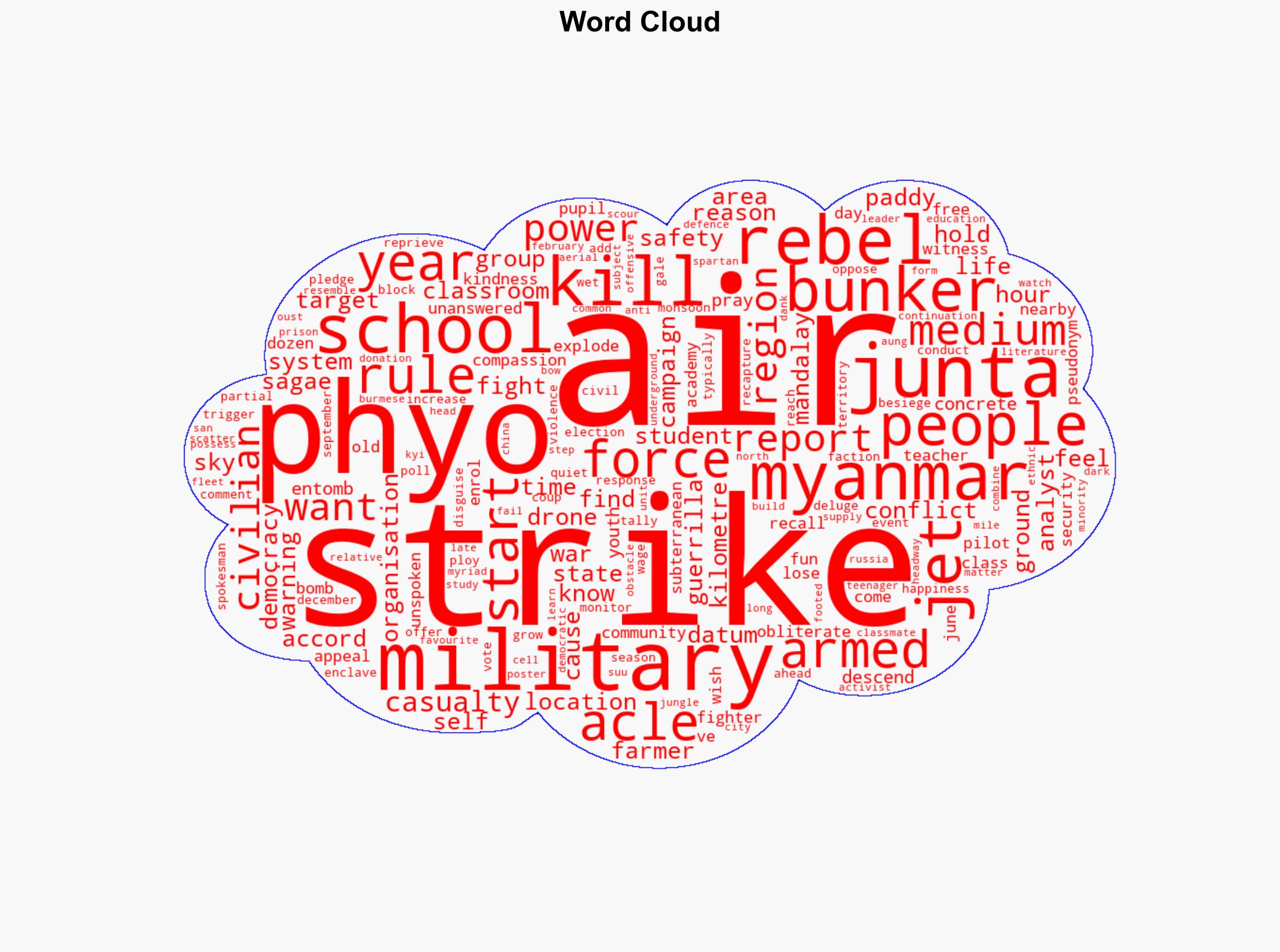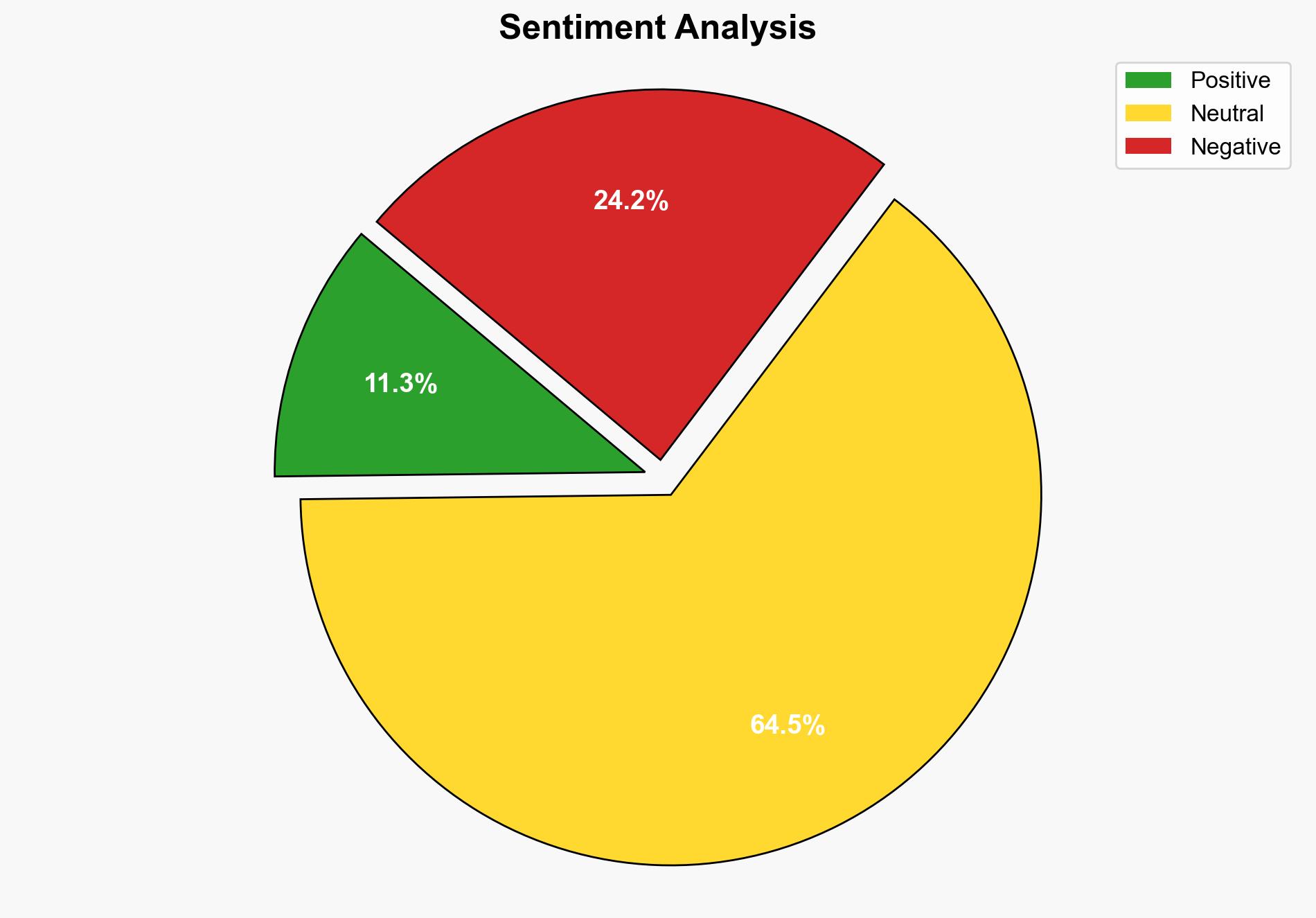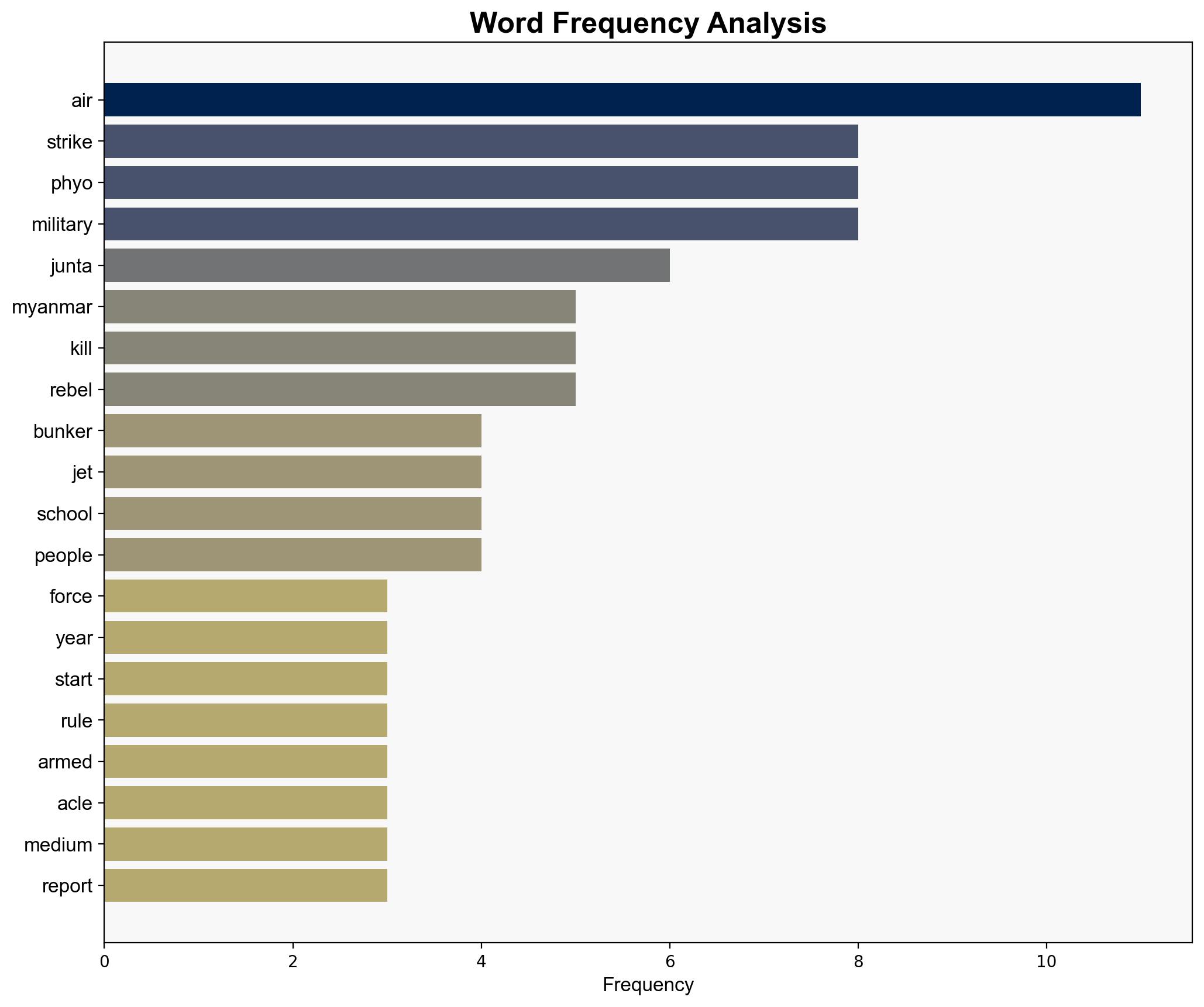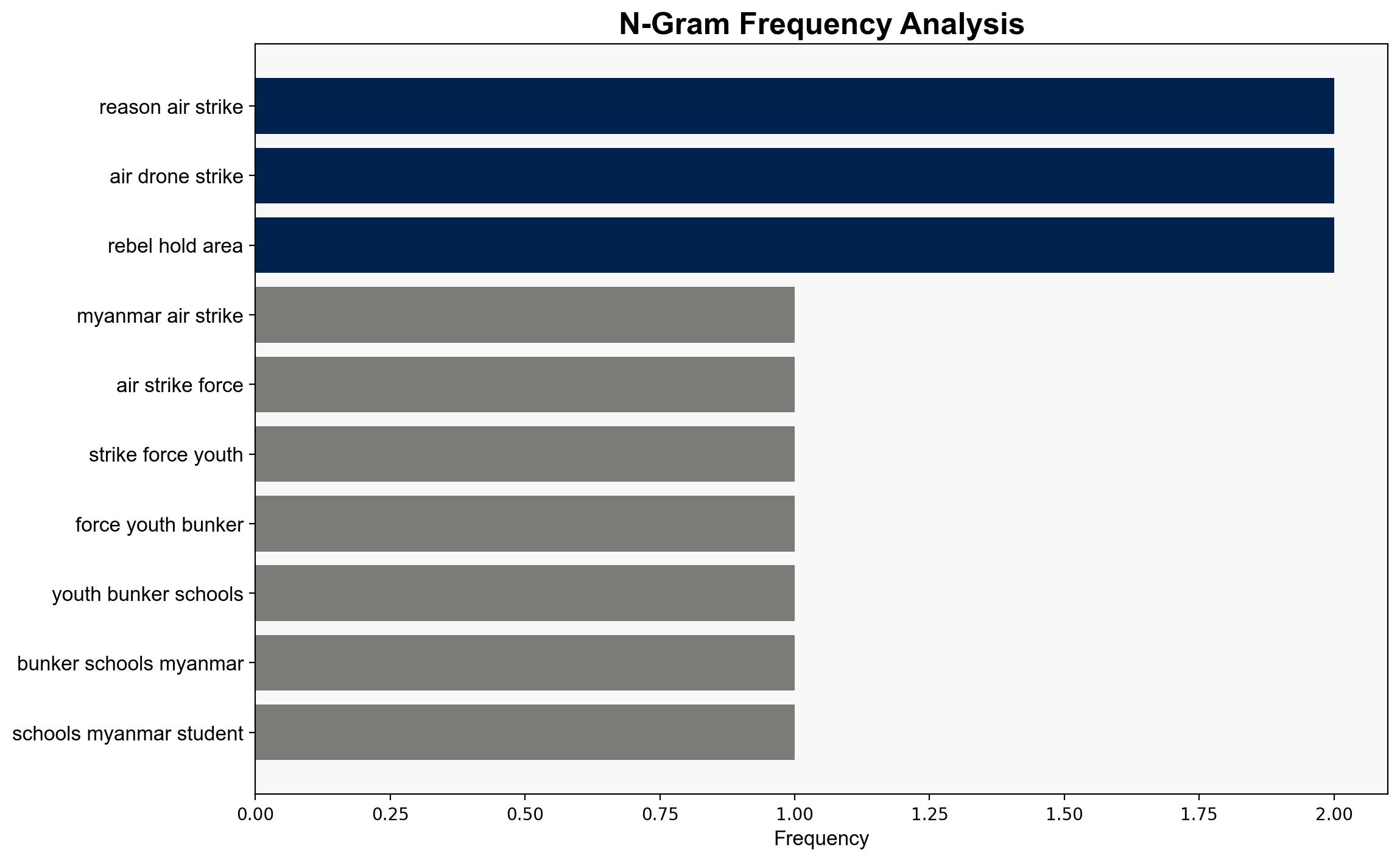Myanmar Air Strikes Force Youth Into Bunker Schools – Ibtimes.com.au
Published on: 2025-10-10
Intelligence Report: Myanmar Air Strikes Force Youth Into Bunker Schools – Ibtimes.com.au
1. BLUF (Bottom Line Up Front)
The strategic judgment is that Myanmar’s military is using air strikes as a tool to maintain control over contested regions, with a moderate confidence level. The most supported hypothesis suggests that these strikes are part of a broader strategy to suppress opposition and secure military dominance. Recommended action includes diplomatic pressure and humanitarian aid to mitigate civilian suffering and encourage dialogue.
2. Competing Hypotheses
1. **Hypothesis 1**: The Myanmar military is conducting air strikes primarily to suppress opposition forces and maintain territorial control ahead of upcoming elections.
– **Supporting Evidence**: Increased air strikes correlate with the military’s campaign to recapture territory and the strategic timing before elections.
– **Structured Analytic Technique**: ACH 2.0 indicates a high likelihood based on the pattern of military actions and political objectives.
2. **Hypothesis 2**: The air strikes are a reactionary measure to recent gains by rebel groups and are not part of a premeditated electoral strategy.
– **Supporting Evidence**: Reports of rebel groups gaining ground and the military’s need to respond to these advances.
– **Structured Analytic Technique**: Bayesian Scenario Modeling suggests a lower probability due to the lack of consistent evidence of significant rebel advances.
3. Key Assumptions and Red Flags
– **Assumptions**: The military’s actions are primarily driven by political motives rather than purely military necessity.
– **Red Flags**: Inconsistent casualty reports and potential misinformation from state media.
– **Blind Spots**: Limited visibility into the internal decision-making processes of the Myanmar military and rebel groups.
4. Implications and Strategic Risks
– **Patterns**: Continued air strikes may lead to increased civilian casualties and displacement, exacerbating humanitarian crises.
– **Cascading Threats**: Potential for regional instability and refugee flows into neighboring countries.
– **Escalation Scenarios**: Heightened conflict could draw in external actors or lead to international sanctions, impacting Myanmar’s economy and regional relations.
5. Recommendations and Outlook
- **Mitigation**: Increase diplomatic engagement with ASEAN and international bodies to pressure Myanmar for a ceasefire.
- **Humanitarian Aid**: Coordinate with NGOs to provide aid to affected civilians and support underground educational initiatives.
- **Scenario Projections**:
– **Best Case**: Ceasefire agreement and initiation of peace talks.
– **Worst Case**: Escalation into a full-scale civil war with regional implications.
– **Most Likely**: Continued low-intensity conflict with sporadic escalations.
6. Key Individuals and Entities
– **Phyo Phyo**: Affected student symbolizing the impact on youth.
– **Zaw Tun**: Member of the democracy movement, representing opposition efforts.
– **Aung San Suu Kyi**: Democratic leader whose image inspires resistance.
7. Thematic Tags
national security threats, regional focus, humanitarian crisis, political instability





